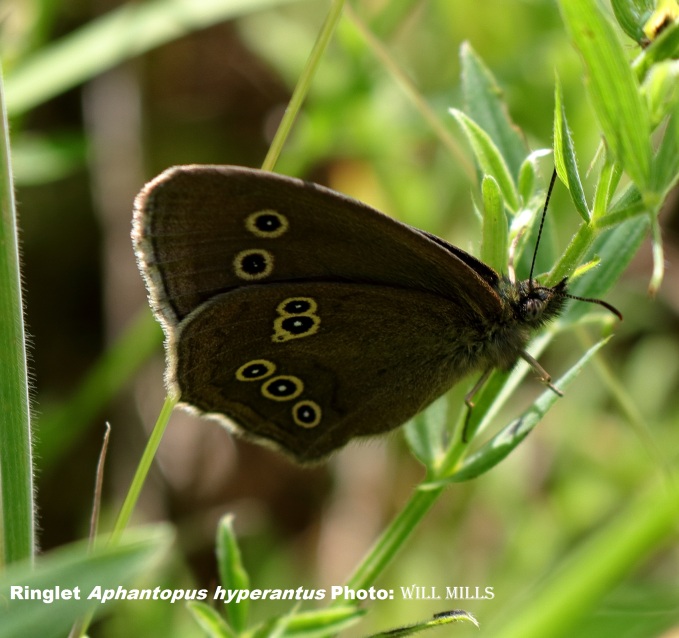05/07/16
Welcome back!
Well, last Friday I had a pretty amazing day! I went back to Burgess Hill as planned, to help Dominic Moore with assessing the newt population in a pond within the Burgess Hill Green Circle Network (BHGCN). The pond has a long and beloved history with the locals as being a place where generations of youngsters have spent time catching newts, and is home to both Smooth (Triturus Lissotriton vulgaris) and Great Crested Newts (Triturus cristatus).
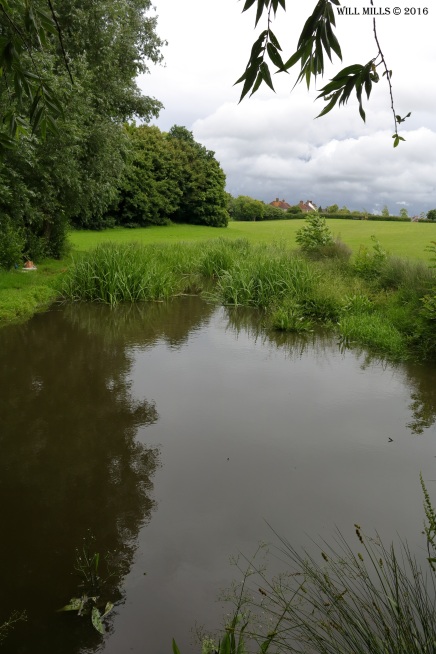
Upon approaching the pond, it doesn’t hold much hope of finding any wildlife within its murky waters, what with the debris and rubbish that has been thrown in, including two for sale signs. But looks can certainly be deceiving!
And so, after setting up the various trays and containers with water ready for anything we may catch, I donned a pair of waders, grabbed a net and cautiously entered the water. Being careful not to fall over from hidden branches and rocks and the like, I began to sweep the net around the vegetation in front of me, growing around the edge of the pond. It wasn’t long before I caught my first newt tadpole, which on further inspection turned out to be a Smooth Newt. It was also accompanied with a few large backswimmers (also known as a Water Boatman) and some large fresh water snails – most likely The Great Pond Snail (Lymnaea stagnalis).
After every sweep of the net, any newts or tadpoles were transferred to a water filled
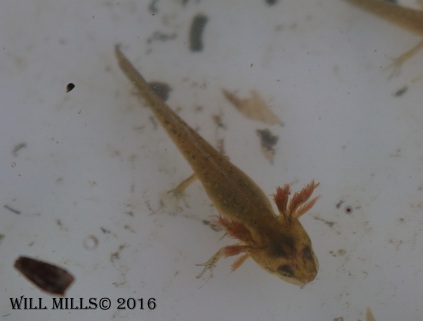
carrier bag attached to the belt of my waders, acting as a temporary holder for them. After a few sweeps I would return to the bank where I would transfer them to Dominic, where he would place them into their containers based on their size; as if placed together the larger individuals would cannibalise the smaller ones, which is not what we wanted obviously. However, after some time it became apparent that we simply didn’t have enough room for all the Smooth Newts so we decided to simply make a note of any that we caught, and return them straight back to the pond behind me to ensure I wouldn’t double count them.
By the time I reached the end of the pond where the vegetation was more densely populated, the carrier bag had split and was unusable, so I had to transfer any catch directly to Dominic on the bank. This turned out to entail an awful lot of walking for poor Dominic in the end as this area proved to be the preferred habitat for the Great Crested Newts.
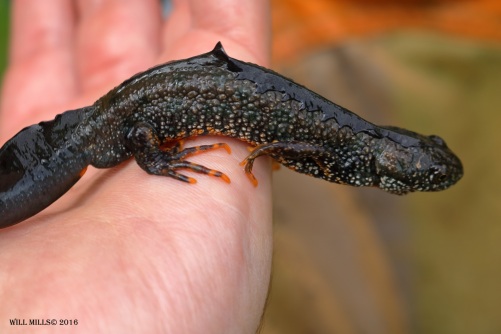
It wasn’t long before I caught the only adult Great Crested Newt of the day, and the first one I’d caught in my life, so to say I was a little bit excited by this was probably an understatement! I was even more delighted when, upon inspecting it further, it turned out to be a male which still had a fair amount of its breeding crest along its back.
From there, it turned out to be a very successful day as I caught many Great Crested tadpoles, sometimes 2-3 at a time, my best being 4 in one go!
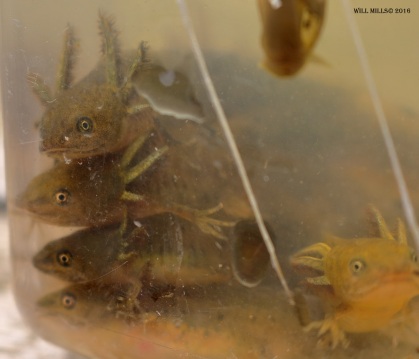
At the final count we had caught around 30 odd Great Crested Newts in all – it’s not easy to count them when they are all together in a small tank, as they keep moving! As I mentioned earlier we caught many Smooth Newts, both adults and tadpoles of varying sizes, though they tended to be smaller than the majority of the Great Crested Tadpoles. We were particularly pleased to catch 3 very impressive adult male Smooth Newts, one of which was still pretty much in full breeding colours.
It wasn’t until I was back upon the bank and able to get a closer look, that I was able to truly admire these fascinating and prehistoric-looking creatures! – And take a few choice photographs of course.
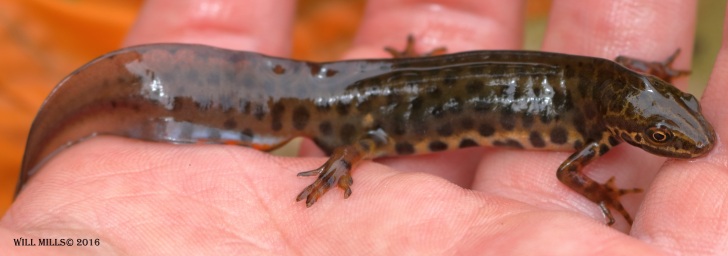
It has to be said that this, along with the rest of the work I’ve been doing with Dominic at Bedelands and within the BHGCN is precisely the reason I began my journey to becoming an ecologist. My whole life I’ve wanted a job where I’m hands on with nature and working to try and save/protect it. I feel very privileged to have had the opportunity to handle these amazing creatures under the supervision of Dominic, who holds a current licence to do so, and will also go towards gaining such a licence for myself with enough time and experience.
It is because of the Great Crested Newts’ protected status, that Dominic is currently in talks to implement some management plans with the local and district councils, as the pond we visited that day is prone to drying out. In the past, the pond used to dry out around mid/late August, but in recent years with the ever increasing temperatures and dry summers we have been having, the pond has been drying up ever sooner in the year; with it completely drying up last year by mid-June! Unfortunately the young newts in the pond require there to be water in the pond till around August, as before this, they are still developing the lungs required to breathe air. If the pond dries up before their lungs are fully developed, that entire generation of newts would unfortunately not survive.
After the survey, we took the time to return to some of the other ponds nearby, which are also a part of the BHGCN. I was able to take some pretty impressive photos of some of the wildlife, but you will have to wait till my next post to see them as they are more fitting for the final part of my background information 2 part series, this time focusing on the BHGCN.
So until then, get out there and get stuck in with something in your local area! As always enjoy the photo’s below and feel free to share and comment.
 of the Green Circle which had a variety different habitats and ponds. It turned out to be an excellent day with many different species present, some of which were a first for me such as Great Crested Newts (
of the Green Circle which had a variety different habitats and ponds. It turned out to be an excellent day with many different species present, some of which were a first for me such as Great Crested Newts (




